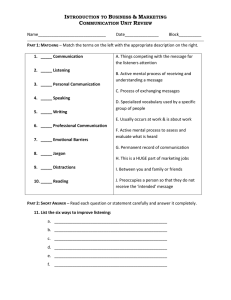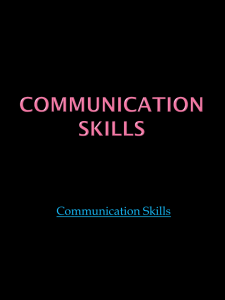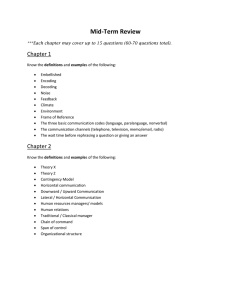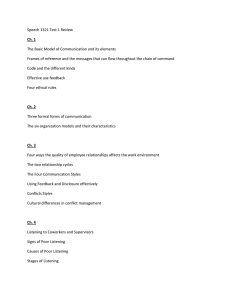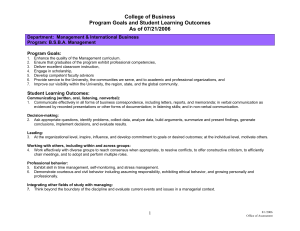Facilitating Dynamic Discussion
advertisement
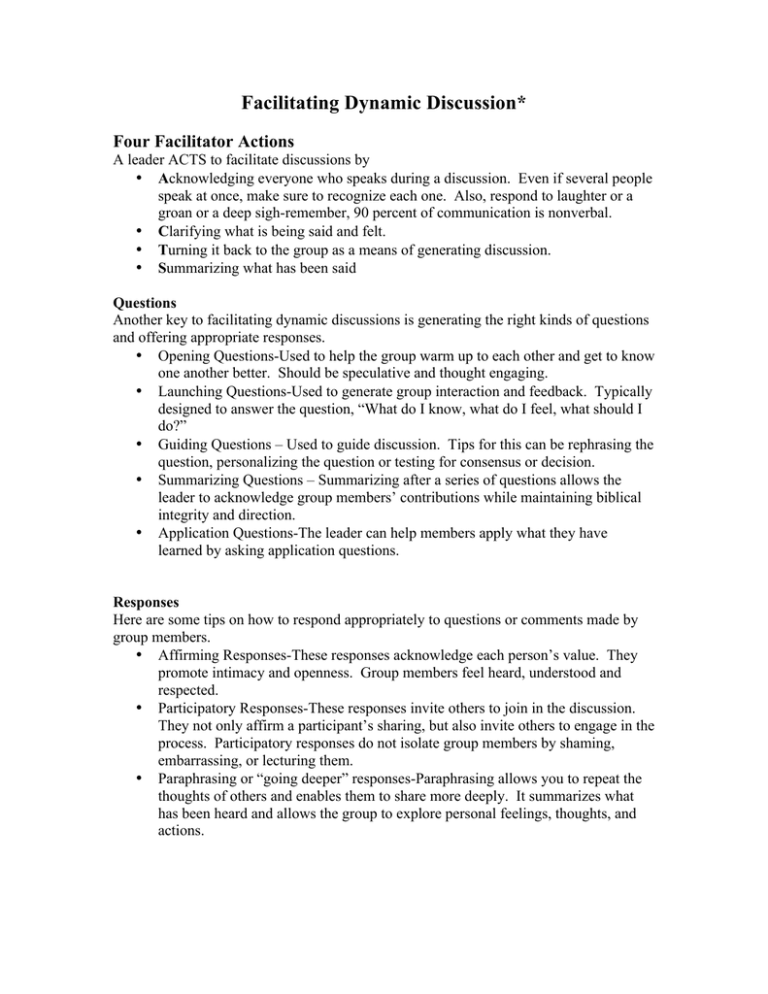
Facilitating Dynamic Discussion* Four Facilitator Actions A leader ACTS to facilitate discussions by • Acknowledging everyone who speaks during a discussion. Even if several people speak at once, make sure to recognize each one. Also, respond to laughter or a groan or a deep sigh-remember, 90 percent of communication is nonverbal. • Clarifying what is being said and felt. • Turning it back to the group as a means of generating discussion. • Summarizing what has been said Questions Another key to facilitating dynamic discussions is generating the right kinds of questions and offering appropriate responses. • Opening Questions-Used to help the group warm up to each other and get to know one another better. Should be speculative and thought engaging. • Launching Questions-Used to generate group interaction and feedback. Typically designed to answer the question, “What do I know, what do I feel, what should I do?” • Guiding Questions – Used to guide discussion. Tips for this can be rephrasing the question, personalizing the question or testing for consensus or decision. • Summarizing Questions – Summarizing after a series of questions allows the leader to acknowledge group members’ contributions while maintaining biblical integrity and direction. • Application Questions-The leader can help members apply what they have learned by asking application questions. Responses Here are some tips on how to respond appropriately to questions or comments made by group members. • Affirming Responses-These responses acknowledge each person’s value. They promote intimacy and openness. Group members feel heard, understood and respected. • Participatory Responses-These responses invite others to join in the discussion. They not only affirm a participant’s sharing, but also invite others to engage in the process. Participatory responses do not isolate group members by shaming, embarrassing, or lecturing them. • Paraphrasing or “going deeper” responses-Paraphrasing allows you to repeat the thoughts of others and enables them to share more deeply. It summarizes what has been heard and allows the group to explore personal feelings, thoughts, and actions. Effective Listening Active listening involves not only what you hear, but also what you say. This means actively engaging with the person who is speaking, setting aside your personal agenda, and keeping yourself from distracting thoughts. Here are some tips for active listening. What you say 1) Invite comments from the group 2) Empathize with people’s emotions 3) Explore their statements, seeking more information 4) Clarify what has been said What you hear 1) Verbal: the content of what is said. Sometimes we are so interested in what we are about to say that we fail to hear the simple facts in a discussion. As you listen, focus on people’s names, events, dates, and other specific information that is being shared. 2) Nonverbal: how the content is expressed. Here you are listening for congruity; that is, do the nonverbal messages match the verbal messages? Listen for this in three areas: a. Facial expressions b. Tone of voice c. Body movements and posture *Information taken from “Leading Life-Changing small groups” by Bill Donahue

